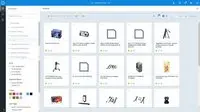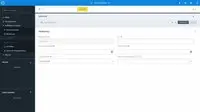Overview
What is SAP Commerce Cloud?
SAP Commerce Cloud (formerly Hybris) is designed to help businesses sell more goods, services, and digital content through every touchpoint, channel, and device through their multichannel ecommerce and order management solution, available as a SaaS or on-premise.
Recent Reviews
Awards
Products that are considered exceptional by their customers based on a variety of criteria win TrustRadius awards. Learn more about the types of TrustRadius awards to make the best purchase decision. More about TrustRadius Awards
Popular Features
- Product management (65)8.989%
- Bulk product upload (63)8.686%
- Product catalog & listings (64)8.484%
- Website integration (64)8.383%
Reviewer Pros & Cons
Video Reviews
1 video
SAP Commerce Cloud Review: Serves As A Customizable Solution For E-commerce Needs
03:13
Pricing
Entry-level set up fee?
- No setup fee
For the latest information on pricing, visithttps://www.sap.com/products/crm/e…
Offerings
- Free Trial
- Free/Freemium Version
- Premium Consulting/Integration Services
Would you like us to let the vendor know that you want pricing?
43 people also want pricing
Alternatives Pricing
Product Demos
Headless eCommerce with SAP Commerce Cloud
YouTube
Features
Return to navigation
Product Details
- About
- Integrations
- Competitors
- Tech Details
- FAQs
What is SAP Commerce Cloud?
SAP Commerce Cloud is a commerce solution built mainly for large enterprises with advanced B2B, B2C, and B2B2C use cases. Users can customize the solution to meet specific needs and manage complex catalogs, products, and configurations in order to create hyper-personalized omnichannel experiences. The solution also includes comprehensive B2B commerce capabilities.
SAP Commerce Cloud Features
Online Storefront Features
- Supported: Product catalog & listings
- Supported: Product management
- Supported: Bulk product upload
- Supported: Branding
- Supported: Search & filter
- Supported: Mobile storefront
- Supported: Product variations
- Supported: Subscriptions & downloads
- Supported: Website integration
- Supported: Visual customization
- Supported: CMS
- Supported: Customer service tools
Online Shopping Cart Features
- Supported: Tax calculator
- Supported: Shipping calculator
- Supported: Checkout user experience
Online Payment System Features
- Supported: Returns & refunds
- Supported: Single-click checkout
- Supported: eCommerce security
- Supported: Credit card transaction fee
- Supported: B2B features
eCommerce Marketing Features
- Supported: Promotions & discounts
- Supported: Personalized recommendations
- Supported: SEO
- Supported: Product reviews
- Supported: Social commerce integration
- Supported: Customer registration
eCommerce Business Management Features
- Supported: Multi-site management
- Supported: Order processing
- Supported: Inventory management
- Supported: Accounting
- Supported: Shipping
- Supported: Custom functionality
Additional Features
- Supported: An API first approach, to setup and connect needed services to run an commerce shop, and microservices enabled architecture.
- Supported: Engages customers in the moment with contextually relevant shopping experiences anywhere across online and offline channels and devices
- Supported: Empowers sales and service reps to respond intelligently to customers’ needs with the holistic view of the customer journey.
SAP Commerce Cloud Screenshots
SAP Commerce Cloud Videos
SAP Commerce Cloud Integrations
- Dynamic Yield
- Coveo Qubit
- Sitecore Discover
- Algolia
- Visa Acceptance Solutions (CyberSource)
- Adyen
- Worldpay from FIS
- Stripe Payments
- Braintree, a PayPal service
- Avalara
- Vertex
- SAP S/4HANA Cloud
- SAP ERP, ECC
- SAP Marketing Cloud
- SAP Sales Cloud
- SAP Service Cloud
- SAP CPQ
- SAP Customer Data Solutions
- Bloomreach Commerce Experience Cloud
- Monetate
- Apache Solr
- OpenText Digital Asset Management for SAP Solutions
- CELUM ContentHub
- Mirakl Marketplace Platform
- Emarsys
- Tenovos
- Empathy.co
- Twiggle
- EasyAsk
- Paybright
- SAP Commerce Marketplace Management by Mirakl
- SAP Store Management solutions by GK
- SAP Paybacks and Chargebacks by Vistex
SAP Commerce Cloud Competitors
SAP Commerce Cloud Technical Details
| Deployment Types | Software as a Service (SaaS), Cloud, or Web-Based |
|---|---|
| Operating Systems | Unspecified |
| Mobile Application | No |
| Supported Countries | Global |
| Supported Languages | 50+Languages |
Frequently Asked Questions
SAP Commerce Cloud (formerly Hybris) is designed to help businesses sell more goods, services, and digital content through every touchpoint, channel, and device through their multichannel ecommerce and order management solution, available as a SaaS or on-premise.
Salesforce Commerce Cloud, Adobe Commerce (Magento Commerce), and Shopify are common alternatives for SAP Commerce Cloud.
Reviewers rate Order processing and Inventory management highest, with a score of 9.2.
The most common users of SAP Commerce Cloud are from Enterprises (1,001+ employees).









